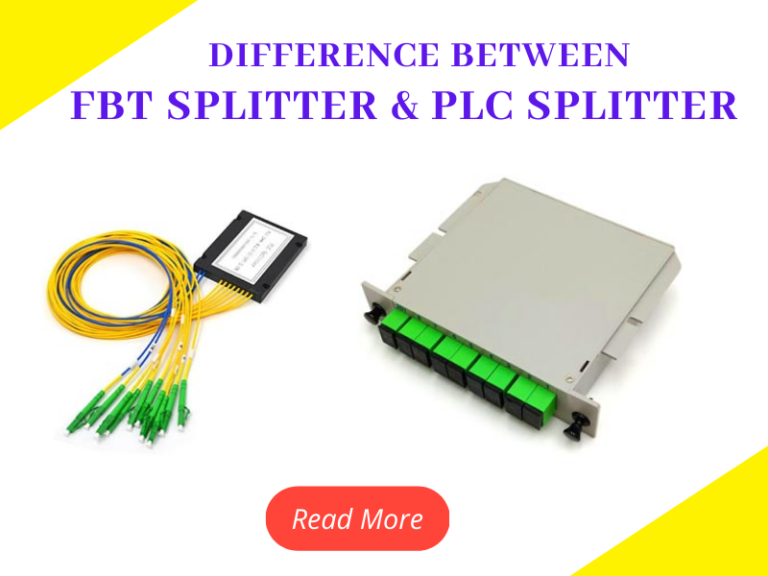
Differences Between FBT Splitter and PLC Splitter
With the increasing popularization of optical fiber communication, fiber optic splitter plays a significant role in many of today’s network topologies. You can find variations of splitter types, the two most commonly deployed splitters are FBT and PLC splitter. Let’s discuss their features and properties in detail so that you know which is more suitable for your needs.
What Is PLC Splitter?
PLC refers as planar lightwave circuit is a micro-optical device which provides low-cost light distribution solution with the small form factor and high reliability. It uses an optical chip to split the input signal into various outputs. At the edge of the chip, there is a light circuit in the ribbon forms mounted on the carrier and fibers. PLC splitter typically adopts silica glass as the material of the lightwave circuit and accepts different types of polished finishes. PLC splitter provides high-quality performance such as low PDL, low insertion loss, high return loss, and excellent uniformity with over a wide wavelength range from 1260 nm to 1620 nm and has an operating temperature -40 degree celsius to +85 degree celsius.
For various applications PLC splitters can further be categorized into different types including bare PLC splitters, blockless PLC splitters, ABS PLC splitters, LGX box PLC splitters, mini plug-in types PLC splitters, tray-type PLC splitters, and 1U rackmount splitters.
What Is FBT Splitter?
FBT refers to a fused biconic taper, are based on traditional technology to weld several fibers together from the side of the fiber. The fibers are aligned by heating for a specific location and length. Since the fused fibers are very fragile they are protected by a glass tube made of epoxy and silica powder. A stainless steel tube covering the inner glass tube is sealed by the silicon. FBT splitters with ABS boxes are also widely used for different applications. The quality of FBT splitters is very good and can be applied in a cost-effective way.
Read more: What is a PLC Splitter and How Does a PLC Splitter Work?
Differences Between PLC & FBT Splitters
Operating Wavelength
FBT splitters can support the range of only 850 nm, 1310 nm, and 1550 nm wavelengths. While on the contrary, PLC splitters offer a wider operating wavelength range from 1260 nm to 1620 nm. The adjustable-range wavelength makes PLC more suitable for applications.
Temperature-Dependent Loss
This is affected by the manufacturing process and the sensitivity of the devices. Once the working temperature of the splitter is out of range, insertion loss will increase and influence the performance of the splitter. PLC splitters work at the temperature of -40 to 85 degrees celsius while FBT splitter on the other hand can only work at -5 to 75 degrees celsius.
Splitting Ratio
Splitting ratios are decided by the inputs and outputs of a splitter. You can find PLC splitters with a splitting ratio of 1:64 which means one light beam can be separated into 64 splits at a time. FBT splitters are typically used for networks requiring the splitter configuration of fewer than 4 splits. When the split ratio is larger than 1:8 more errors occur which causes a higher failure rate. Therefore, FBT splitters are more restricted to the numbers of splits in one coupling.
Price
The outer appearance and size of the FBT and PLC fiber splitters seem very similar but their internal technologies and specifications differ in various ways. Due to the complicated manufacturing technology of PLC splitters its cost is higher than FBT splitter. But it has proven itself as a higher reliable type of device compared to the traditional FBT splitter. If your application is simpler and short of funds then FBT splitter is a cost-effective solution.
Conclusion
Overall if you’ll see everything in one frame you’ll find PLC splitter offers better performance with fewer limitations, but FBT splitters are less expensive and save more budget.
If you are still uncertain which one to choose and wish to know more about fiber optic splitters or need any professional help contact us.
For more information, you can check our other blogs. If you have any queries or doubts feel free to reach us.

